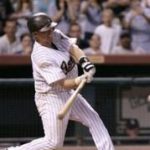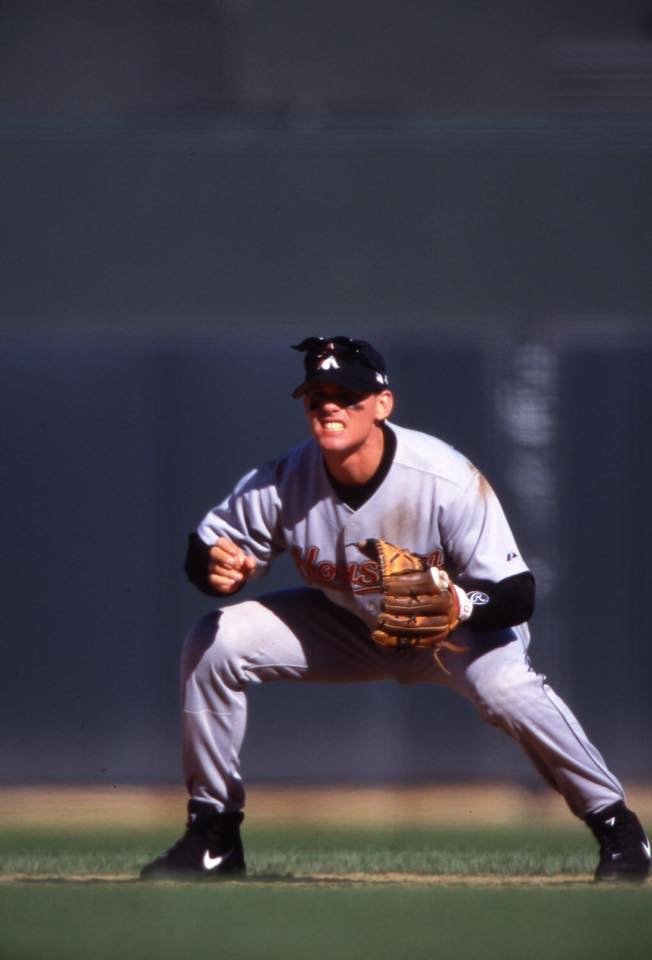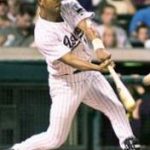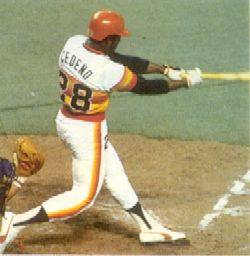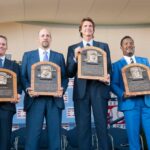Craig Biggio
Positions: Second Baseman, Catcher and Centerfielder
Bats: Right • Throws: Right
5-11, 185lb (180cm, 83kg)
Born: December 14, 1965 in Smithtown, NY
Draft: Drafted by the Houston Astros in the 1st round (22nd) of the 1987 MLB June Amateur Draft from Seton Hall University (South Orange, NJ).
High School: Kings Park HS (Kings Park, NY)
School: Seton Hall University (South Orange, NJ)
Debut: June 26, 1988 (5,499th in major league history)
vs. SFG 2 AB, 0 H, 0 HR, 0 RBI, 1 SB
Last Game: September 30, 2007
vs. ATL 4 AB, 1 H, 0 HR, 0 RBI, 0 SB
Hall of Fame: Inducted as Player in 2015. (Voted by BBWAA on 454/549 ballots)
View Craig Biggio’s Page at the Baseball Hall of Fame (plaque, photos, videos).
Full Name: Craig Alan Biggio
Nicknames: Bidge
Pronunciation: \BIDGE-ee-oh\
View Player Info from the B-R Bullpen
View Player Bio from the SABR BioProject
Relatives: Father of Cavan Biggio
Notable Events and Chronology for Craig Biggio Career
Biography
Craig Biggio traveled the path from catcher to second baseman, and then to center fielder, but no matter which position he played he was the heart and soul of the Houston Astros in the 1990s and early 2000s. The gritty Biggio won four Gold Glove Awards at second while helping the Astros to four division titles in five seasons, from 1997 to 2001. With Jeff Bagwell, Derek Bell, and later Lance Berkman, he was part of the famous “Killer B’s,” who unfortunately had little sting in the playoffs, losing in the first round four times. In 1998, Biggio joined Tris Speaker as the only players to steal 50 bases and hit 50 doubles in a single season. In 2007, he became the first Astro to reach the 3,000-hit mark.
Quotes From
“I couldn’t have scripted it any better. As a baseball player, the way the fans treated me. … I’ve said for a long time, I love these guys, I love this city, I worked hard here and they appreciated that.” — Craig Biggio on the night of his 3,000th hit “It matters to me. Do I like it? No. I hate it. I know some people here are happy that I’m out of there again. For me, I know I have to start swinging the bat better. Once I start swinging the bat better, I’ll be back at the top of the order. It’s something that I’ve got to fix, watch video and make it right.” — Craig Biggio, on being demoted from first to sixth in the lineup by manager Phil Garner, May 2007
After several successful seasons as the Astros’ full-time backstop, Biggio was moved to second base in 1991 in an effort to protect his considerable speed from the rigors of catching. Although Biggio had been unhappy with a similar experiment in centerfield the previous season, he quickly warmed to his new position and soon distinguished himself as the only player ever selected as an All-Star both behind the plate and at second base. Biggio had played some shortstop in high school, but in his four years at Seton Hall University (where he teamed with future major-league stars Mo Vaughn and John Valentin) he was firmly ensconced behind the plate. Even then, Biggio showed rare speed for a catcher. The Astros’ first-round draft pick in June 1987, Biggio was rushed to the majors in 1988 to replace the injured Alan Ashby and batted only .211 in his major-league debut. The following season — as the first catcher in the majors to start and bat leadoff since the Orioles’ Floyd Rayford in 1985 — Biggio dramatically improved his performance at the plate (.257, 13 HR, 60 RBI) and stole 21 bases in 24 attempts, the second-best percentage in the NL. He also led the Astros with 26 infield hits. Biggio was regarded as a good handler of pitchers, but despite his agility he had his share of defensive liabilities. At one point in 1989, Biggio had allowed 39 consecutive stolen bases. The following season (his first full season in the majors) Biggio had no pickoffs, allowed 13 passed balls, and continued to fail miserably when it came to throwing out potential base stealers. His 17% success rate when it came to throwing out opposing runners was the worst in the majors, although manager Art Howe laid most of the blame on the Astros pitching staff. “Most of the time, [our pitchers] weren’t even giving him a chance,” Howe insisted. “Johnny Bench in his prime couldn’t have thrown out some of those guys at second.” Despite considerable improvement over the next few seasons, Biggio’s speed made it clear that his future was elsewhere on the diamond. He was moved to center during the 1990 season for a brief trial run, but felt uncomfortable in the outfield, and the Astros’ lack of depth behind the plate eventually forced his return to catching. Coached by Yogi Berra in the spring of 1991, Biggio had another outstanding season (.295, 4, 46, 19 stolen bases) and was named to his first All-Star Team, the first Astros catcher so honored. Nevertheless, Biggio began 1992 season at second base, replacing Casey Candaele. Helped by countless spring training drills (in one, Biggio used a ping-pong paddle to work on his glove positioning) the converted catcher made only twelve errors in 161 games at second and posted a respectable .984 fielding percentage, slightly above the league average. Biggio’s considerable improvement at an unfamiliar position was impressive. Only three of his errors came after his second appearance at the All-Star Game in mid-July, and in 1994 he received the first of five consecutive Gold Glove awards. Biggio’s shift may have helped the Astros solve their immediate problems at second base, but it led to a trade that would prove costly in the long run. To replace Biggio behind the plate, the Astros sent future All-Star Kenny Lofton to Cleveland as part of a deal for catching prospect Eddie Taubensee. In just over two years in Houston, Taubensee would hit just .234 for the Astros, while Lofton became a perennial All-Star for the Indians. Skilled at making contact but tough to double up, Biggio eventually settled into the second slot with the Astros, keying what would soon become one of the most powerful lineups in the majors. His on-base percentage often topped .400, helping to set the stage for sluggers Jeff Bagwell, Ken Caminiti, and (later) Derek Bell. In 1995, he led the National League with 123 runs scored (breaking Jimmy Wynn’s team record of 117 in 1972) and for the first time was voted to start the All-Star Game at second base. He finished the season with 22 homers and 33 stolen bases, the first Astro to reach the 20-20 milestone since Kevin Bass in 1986. Many observers expected Biggio to leave Houston for greener pastures as free agency beckoned after his fine 1995 season. After Biggio turned down a $20 million offer from the Astros, he drew strong interest from the Rockies, Cardinals, and Padres. But Biggio decided to return after teammate Jeff Bagwell agreed to restructure his contract so that the Astros could offer a four-year deal worth over $22 million. Biggio continued to cement his reputation as the best second baseman in the National League with yet another All-Star campaign in 1996, becoming the only Astro ever to be twice voted a starter in the Midsummer Classic. His 146 runs in 1997 were the most by a National Leaguer since 1932, when Chuck Klein touched home plate 152 times for the Phillies. That season, Biggio set a personal best with 47 stolen bases and his 191 hits were second in club history only to Enos Cabell’s 1978 total of 195. In 1998, he hit .325, shattering Cabell’s record with 210 hits and passing Cesar Cedeno as the club’s all-time runs leader. One of the most impressive benchmarks set by the former catcher was his franchise-record streak of 494 games played, which ended on August 5, 1998. A month later, Biggio became only the second player in baseball history (joining Tris Speaker, who did it in 1912) ever to hit 50 doubles and steal 50 bases in a single season. By his standards, Biggio had a mediocre season in 1999. Although he hit 56 doubles (the sixth highest total in NL history) and walked 88 times (his most since 1992), he suffered a major decline in speed as he stole only 28 bases and, for the first time in his career, didn’t hit a triple. With the slower legs came a jolting injury in 2000. Usually known as a durable player, Biggio played in only 101 games as he tore two knee ligaments while turning a double play. The Astros weren’t losing much as Biggio was having another below-average year, hitting only .268 with 12 stolen bases and only 13 doubles. The knee injury only exacerbated concerns about his ever-declining quickness, and in 2001 he stole fewer than 10 bases for the first time since his rookie year.
@ET-DC@eyJkeW5hbWljIjp0cnVlLCJjb250ZW50IjoicG9zdF90YWdzIiwic2V0dGluZ3MiOnsiYmVmb3JlIjoiTGVhcm4gTW9yZSBhYm91dCB0aGUgdGVhbXMsIHBsYXllcnMsIGJhbGwgcGFya3MgYW5kIGV2ZW50cyB0aGF0IGhhcHBlbmVkIG9uIHRoaXMgZGF0ZSBpbiBoaXN0b3J5IC0gLSAtIC0gLSAtIC0gIiwiYWZ0ZXIiOiIiLCJsaW5rX3RvX3Rlcm1fcGFnZSI6Im9uIiwic2VwYXJhdG9yIjoiIHwgIiwiY2F0ZWdvcnlfdHlwZSI6InBvc3RfdGFnIn19@




